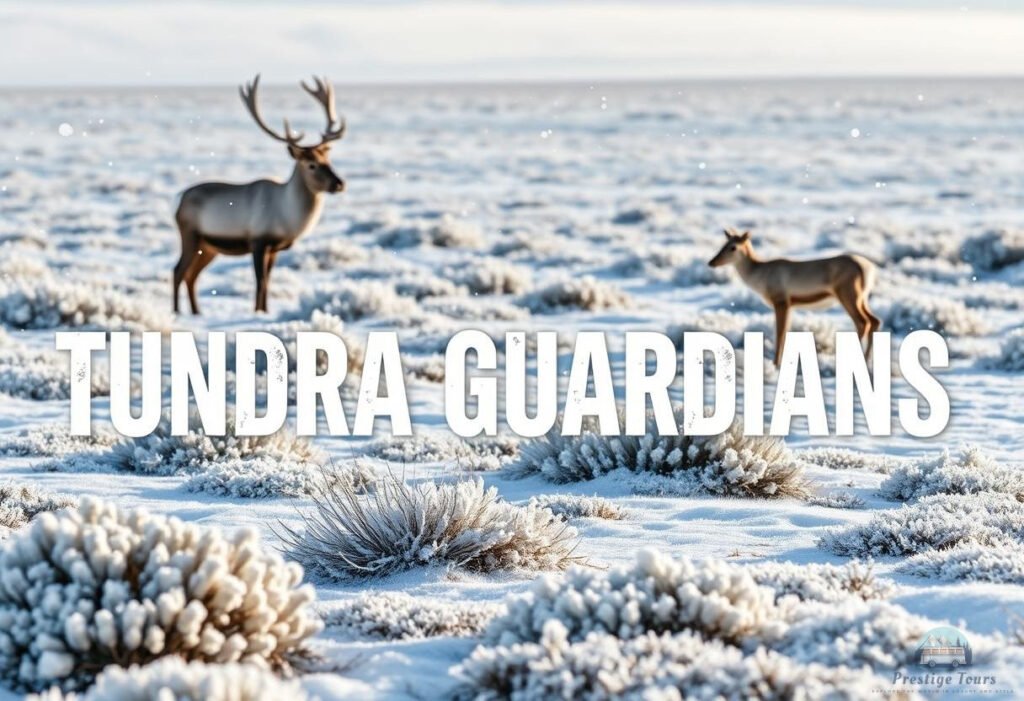Legends of the Tundra: Amazing Facts about Fauna and Flora
The Tundra Wonders are a unique ecosystem that attracts the attention of travelers and researchers with its uniqueness. The tundra, with its cold climate and harsh conditions, is home to many different species of flora and fauna. These unusual plants and animals make the tundra not only an important object of study, but also an attractive place for nature lovers and ecotourism.
Tundra Flora: Plants That Survive Climate Change
Resistant plants
The flora of the tundra includes many amazing plants that are able to survive in extreme conditions. Mosses, lichens and shrubs occupy key positions in this ecosystem. These plants have unique adaptations that allow them to withstand strong winds, frosts and low levels of nutrients in the soil.
- Mosses and lichens form continuous carpets, protecting the surface from erosion and freezing.
- Shrubs such as dwarf birches have a compact form, which helps minimize heat loss.
- Many plant species are capable of rapid reproduction during a short growing season.
Tundra wonders in flowers
Among the tundra wonders are rare flowering plants that delight the eye with their bright colors. These plants play an important role in the ecosystem, providing food sources for various animals, including insects and birds. For example, flowers such as edelweiss and hellebore have not only aesthetic value, but are also symbols of the resilience of life in harsh conditions.
Tundra Fauna: Animals Adapted to Extreme Conditions
Mammals of the Tundra
The tundra's fauna is also known for its diversity, including key species such as reindeer, wolves, and Arctic foxes. These mammals have unique adaptations that allow them to survive in cold temperatures and food shortages. For example, reindeer have thick fur and subcutaneous fat that protect them from the cold, and Arctic foxes can change the color of their fur depending on the season, which helps them hide from predators.

- Wolves in the tundra form packs, which allows them to effectively hunt large game.
- Arctic foxes provide for their families by scavenging food scraps and hunting small animals.
- Deer migrate long distances in search of better food and shelter.
Birds and their migrations
Migratory bird species such as geese and loons undertake long flights to find suitable nesting and feeding sites. These birds are highly adapted to tundra conditions and have a keen understanding of how to survive the harsh winter months. Tundra wonders include strategies that allow them to stay afloat in challenging conditions such as changing weather and food availability.
Threats to the tundra ecosystem
Climate change
With climate change, the tundra faces serious threats that affect flora and fauna. Climate warming changes the ecosystem, which threatens the existence of many species. For example, some plants and animals cannot adapt to rapid changes, which leads to their extinction.
- Rising temperatures affect natural habitats, disrupting the ecosystem balance.
- Climate change affects bird migration routes and other ecological processes.
Human activity
In addition to climate change, human activity also poses a significant threat to the tundra ecosystem. Economic activity related to resource extraction leads to habitat destruction and loss of biodiversity. It is important to understand the importance of protecting the tundra for future generations to preserve its uniqueness and diversity of life.
Conclusion
The wonders of the tundra are not only an amazing aspect of nature, but also an important object for study and protection. Preserving the unique nature of the tundra and supporting ecotourism are critical to protecting this amazing ecosystem for many years to come. Join those who value and respect nature and contribute to its preservation by following links to support environmental protection, such as WWF and local environmental organizations.












